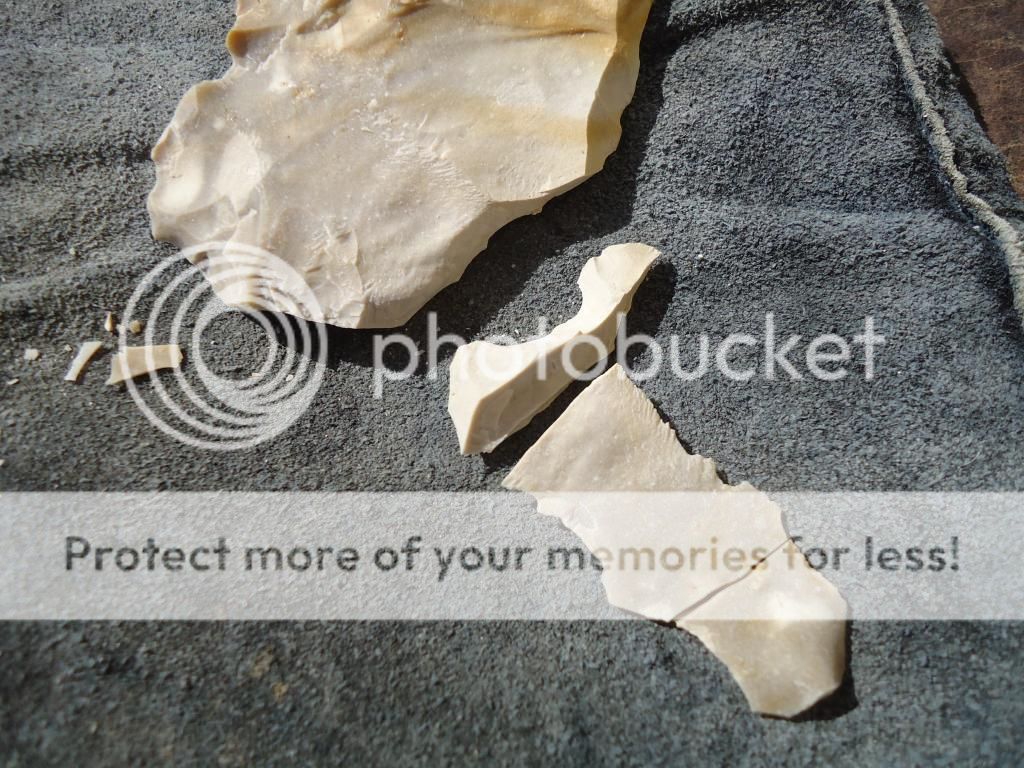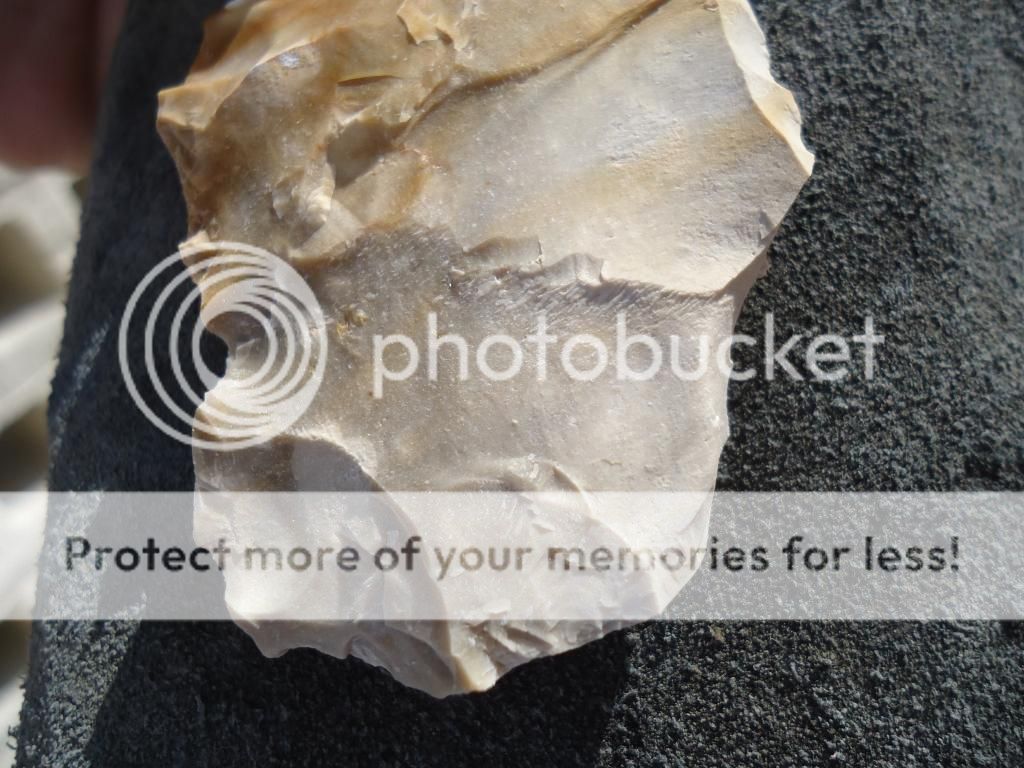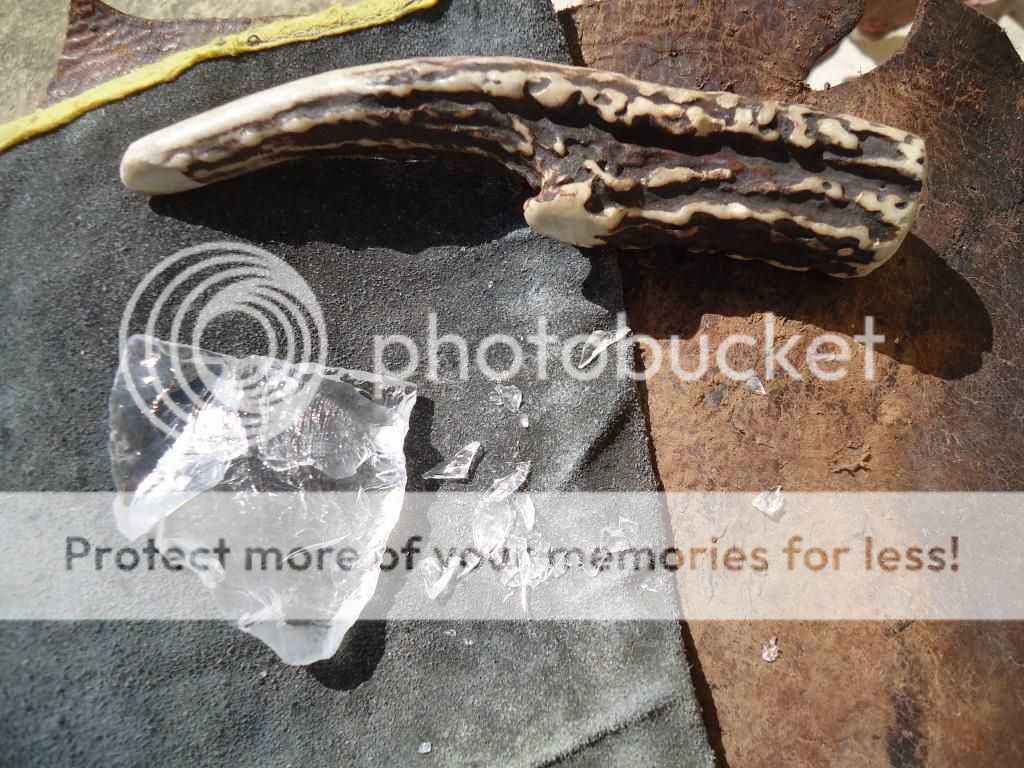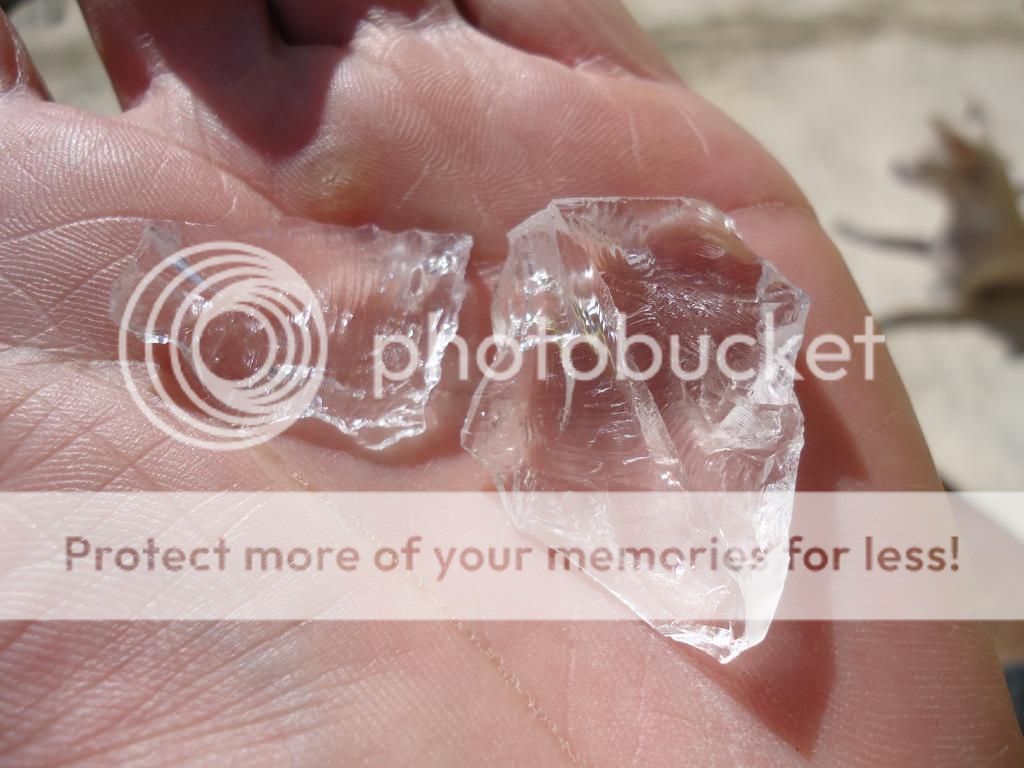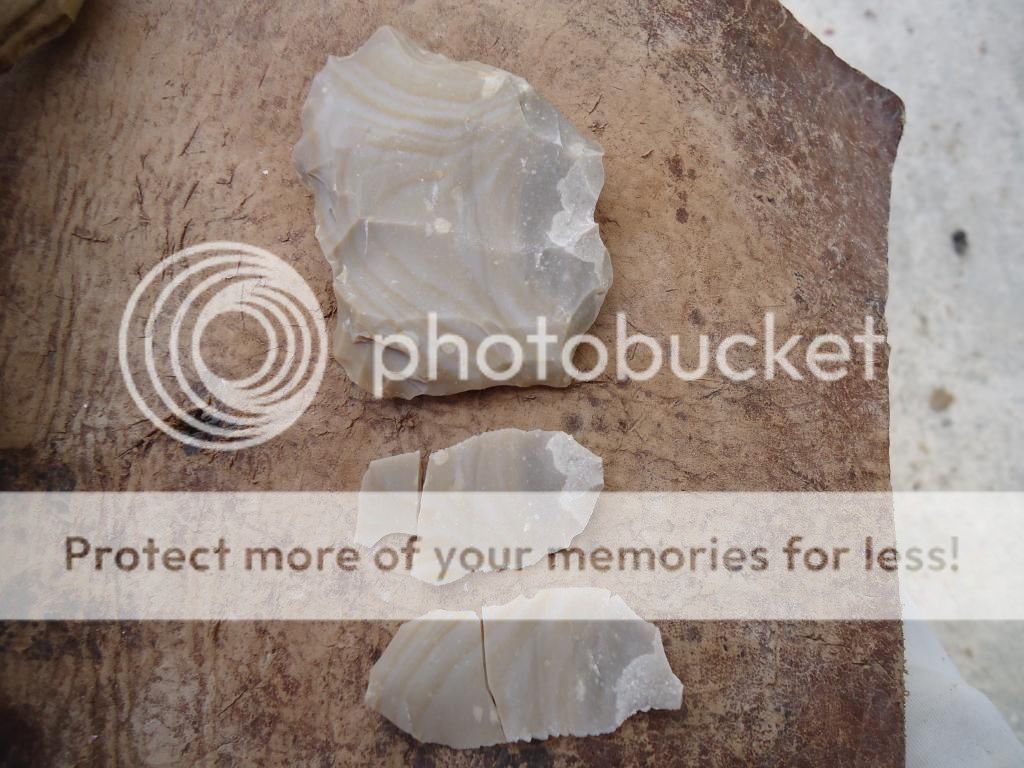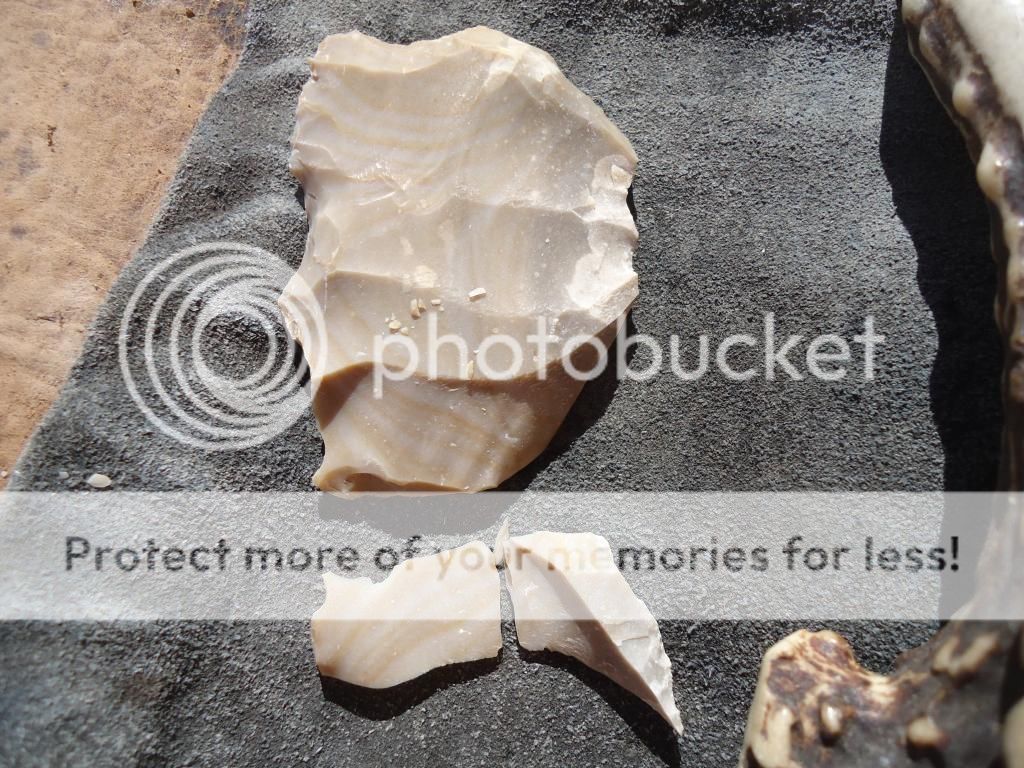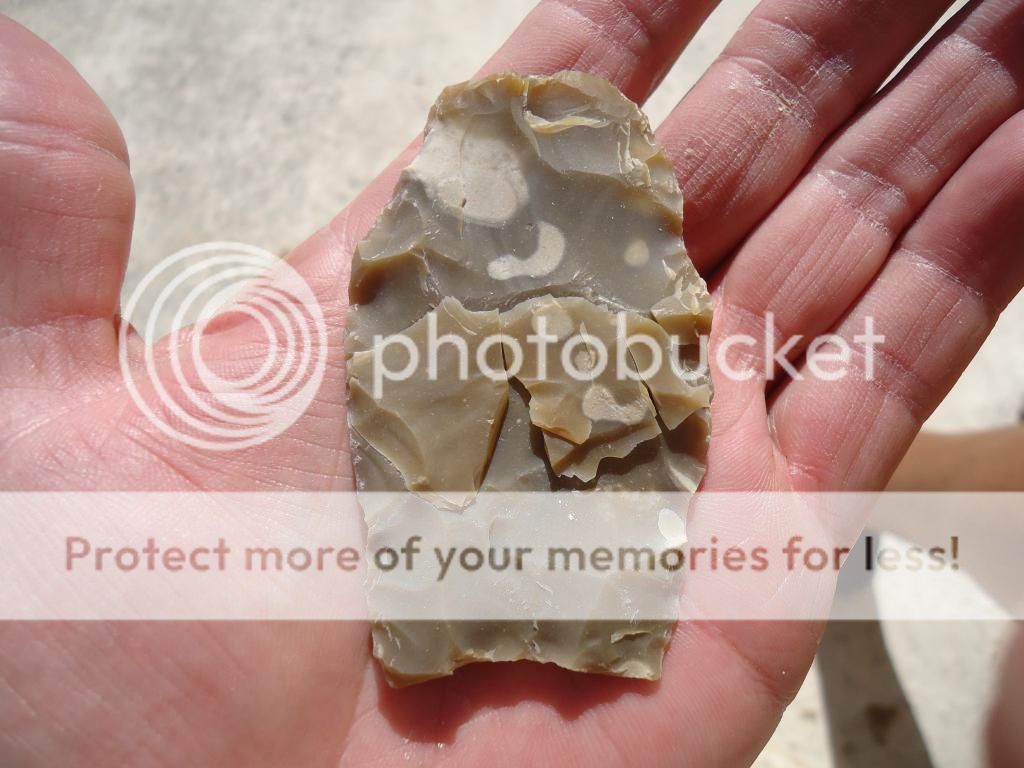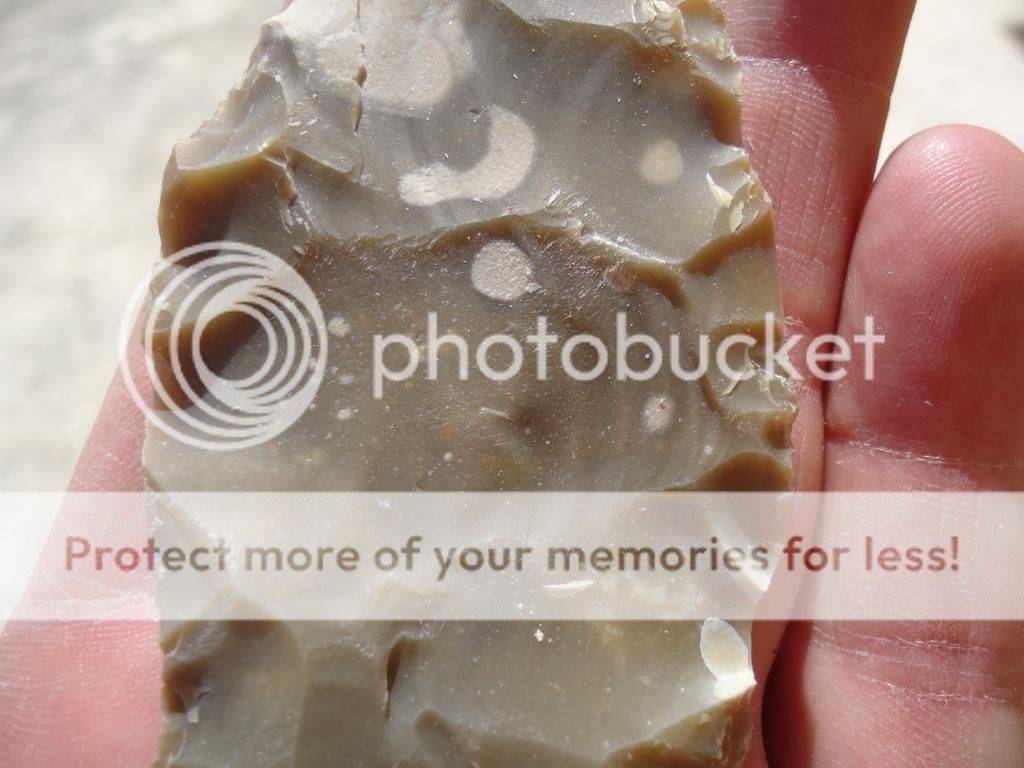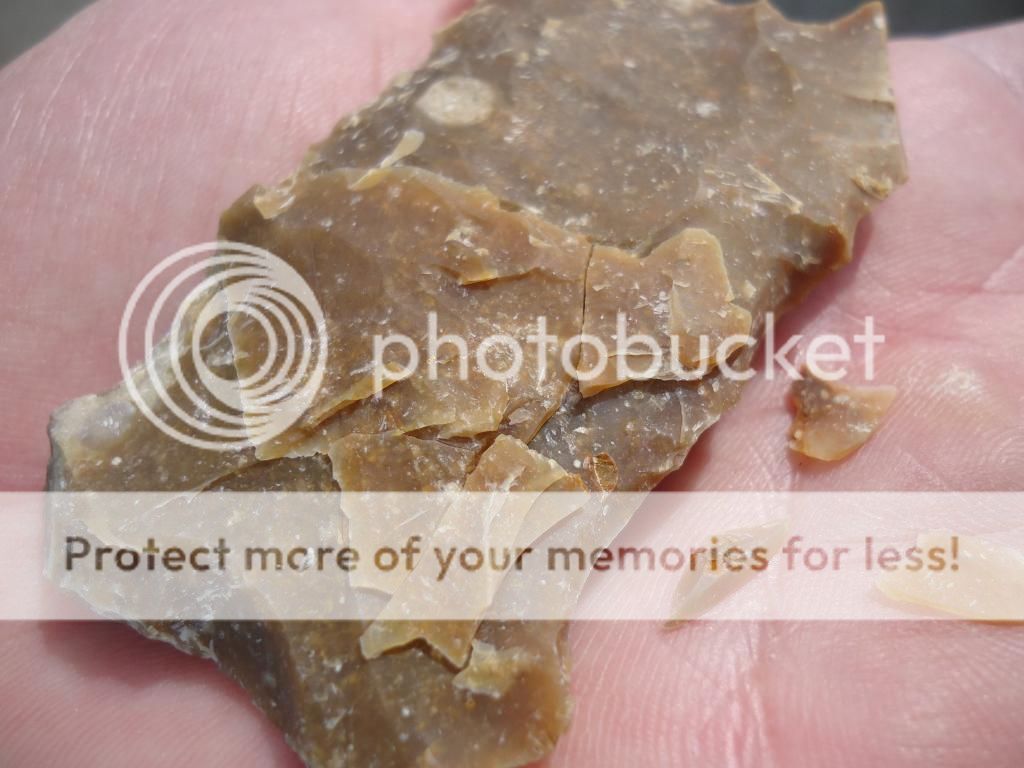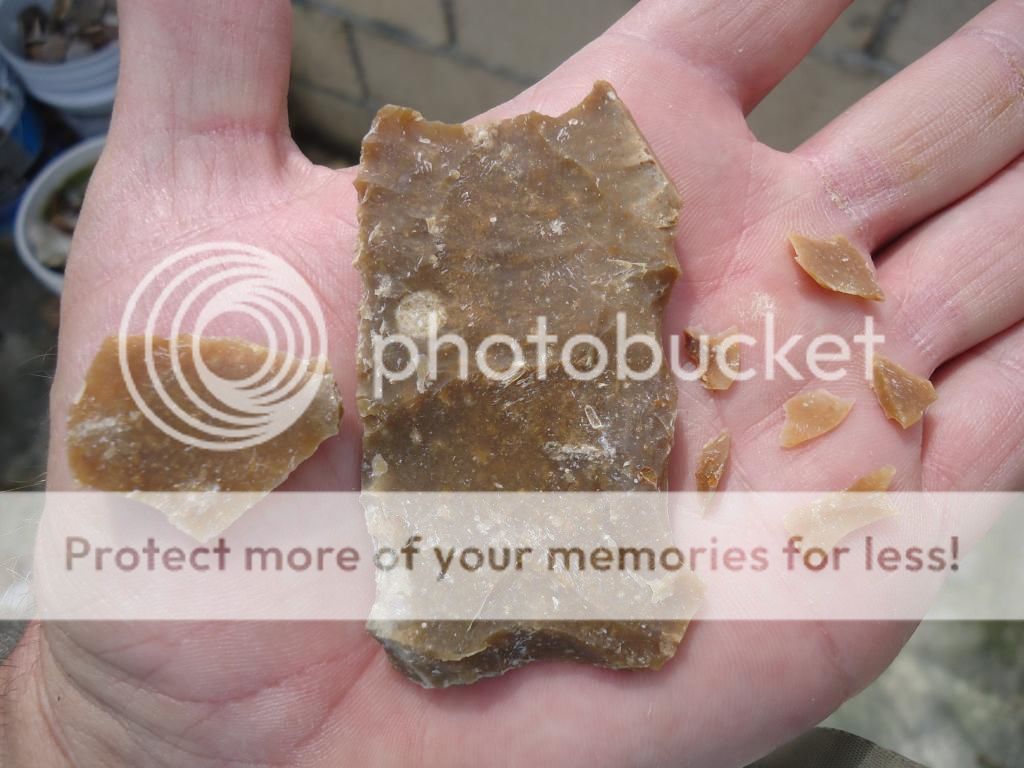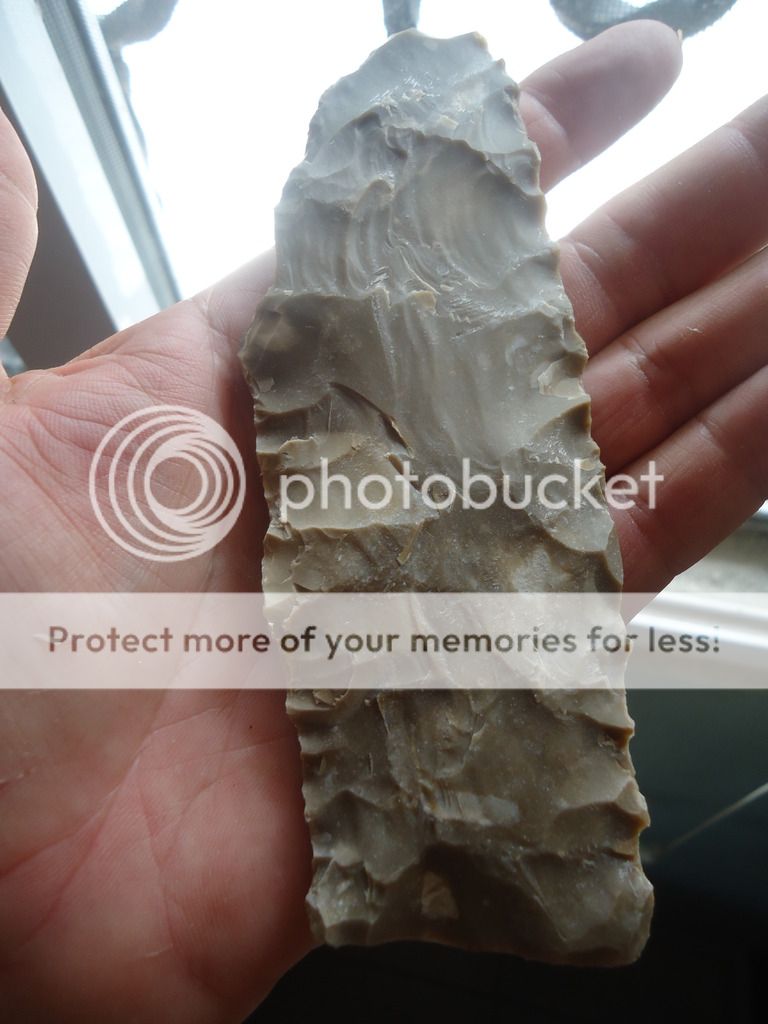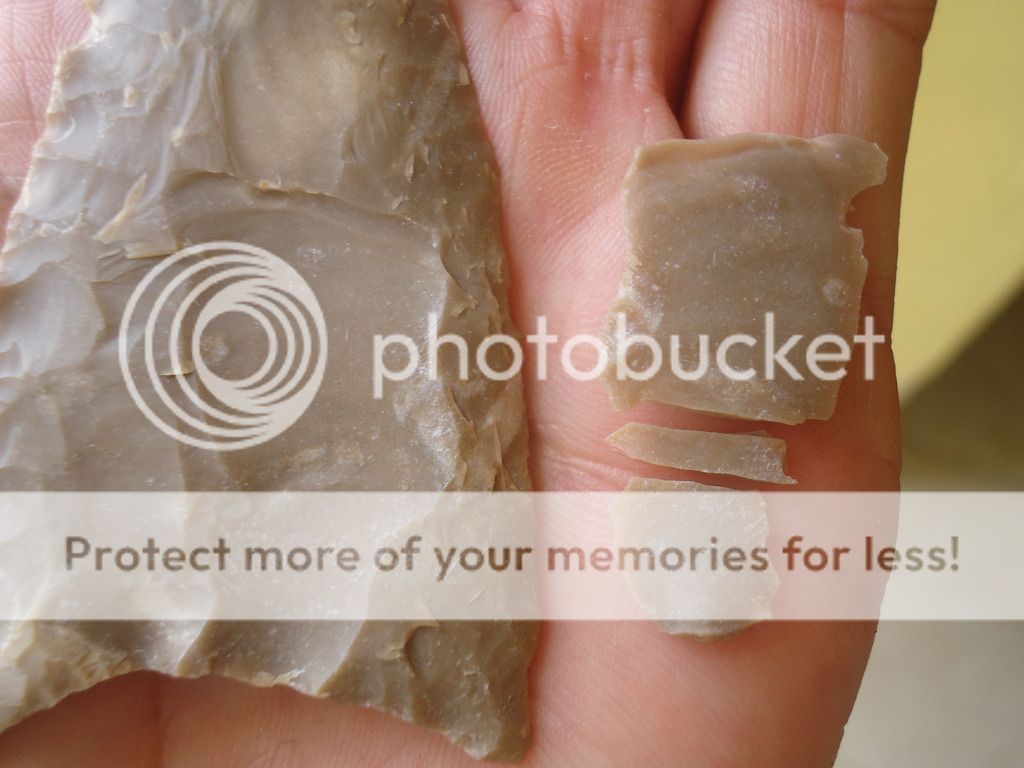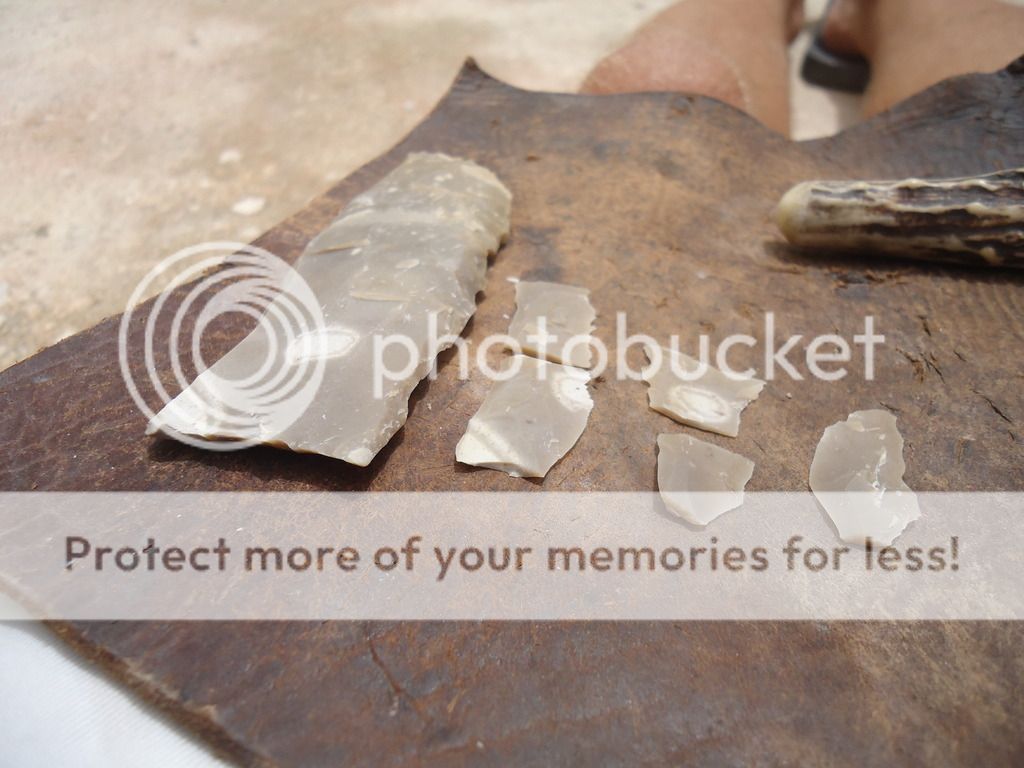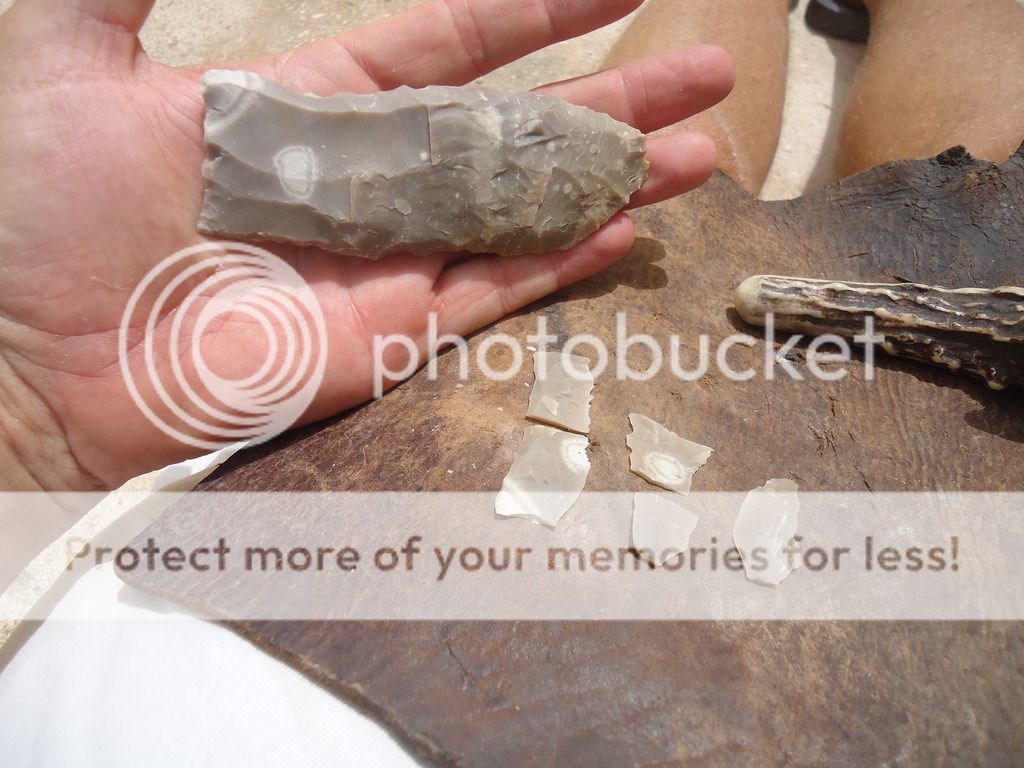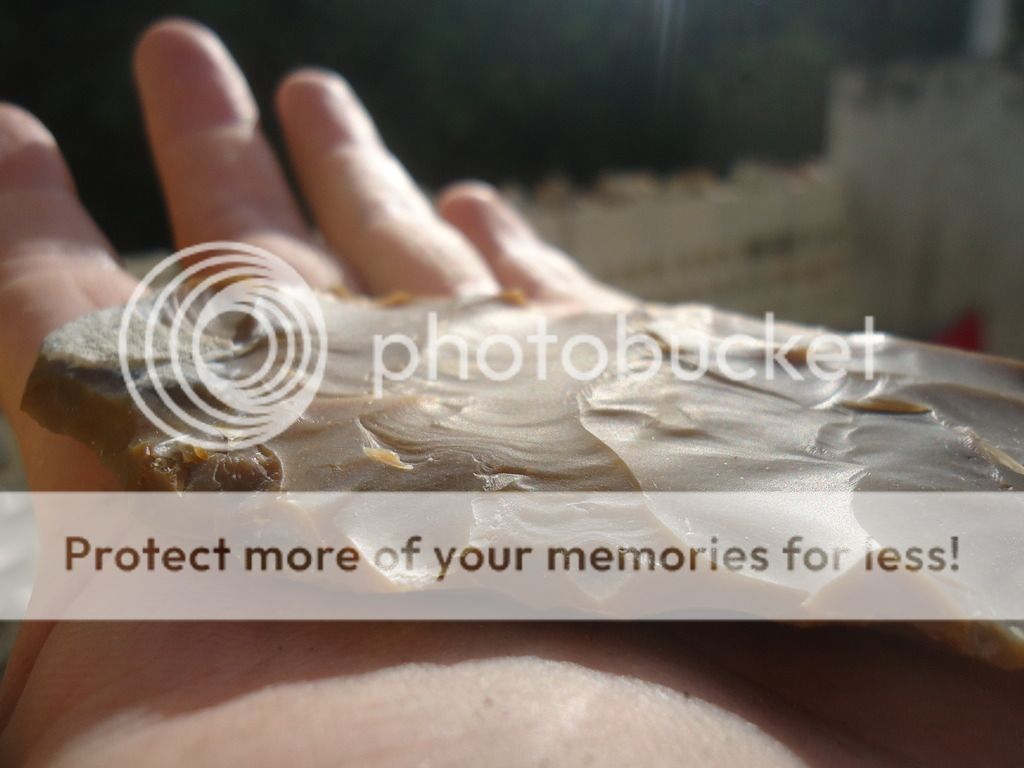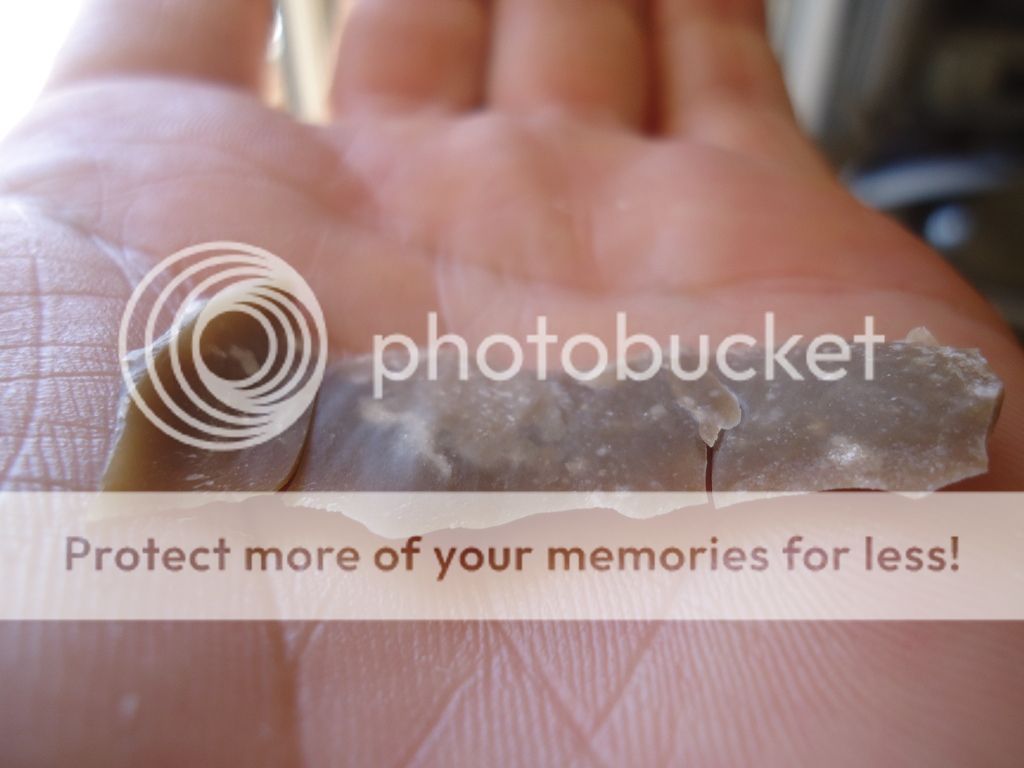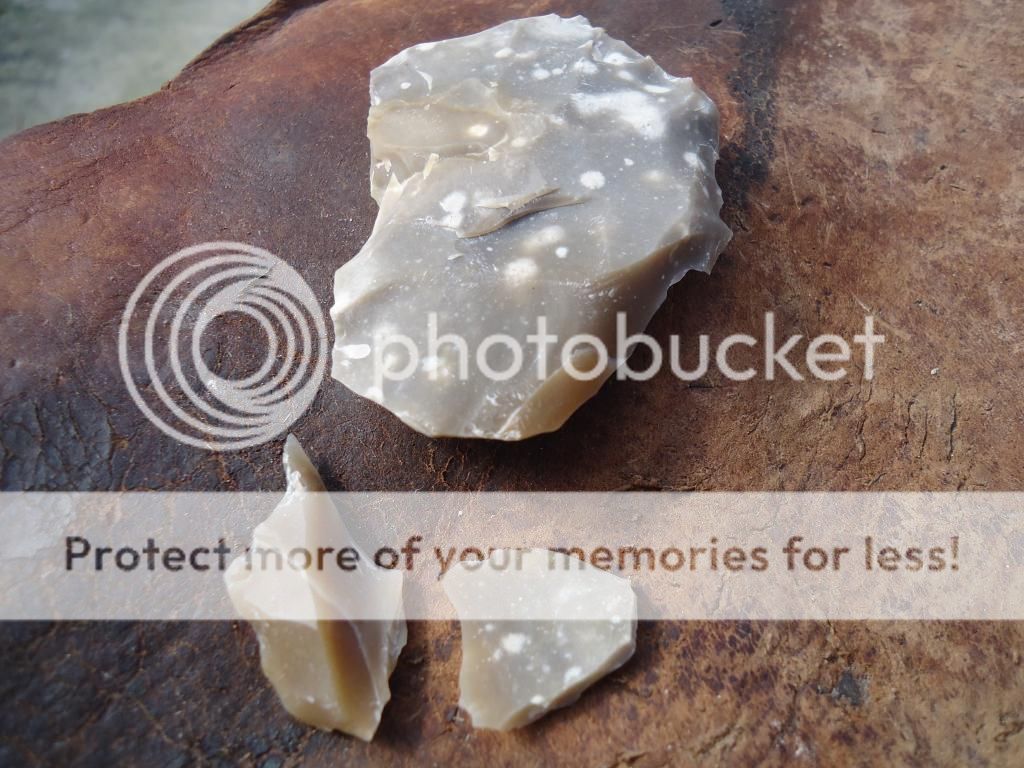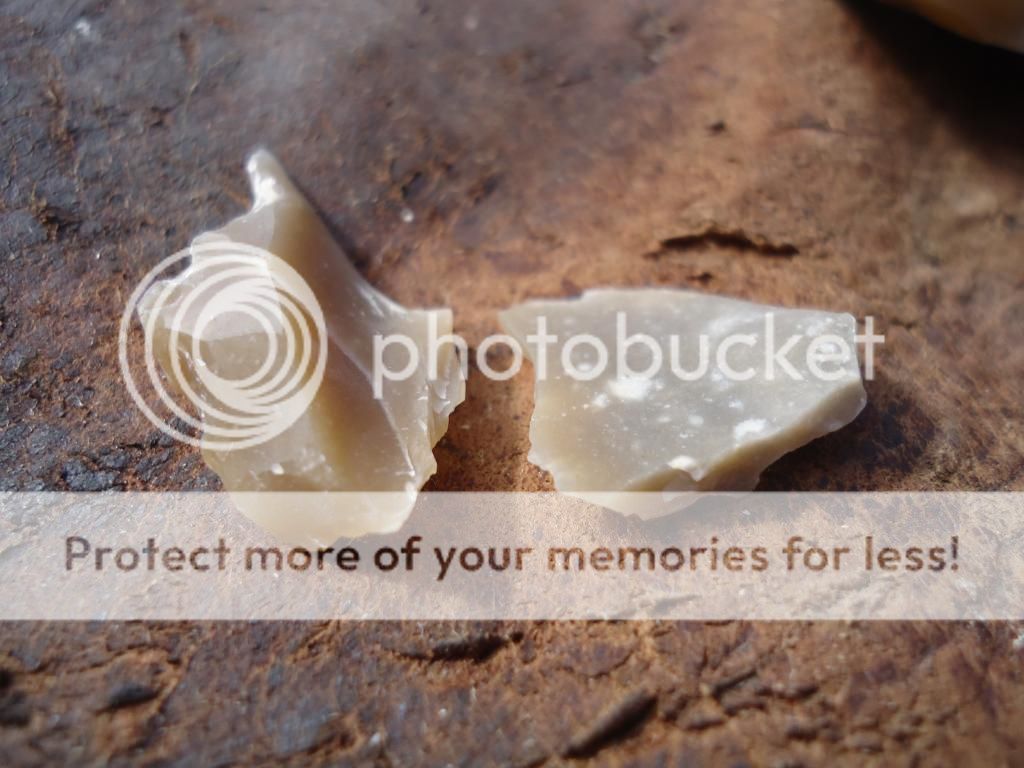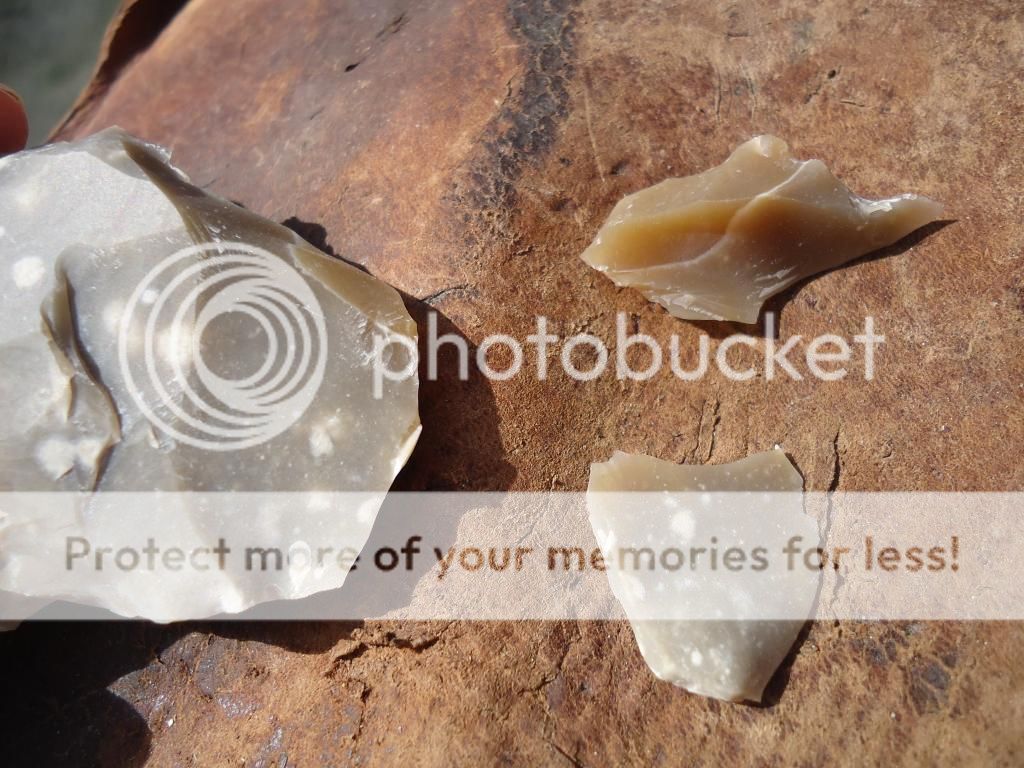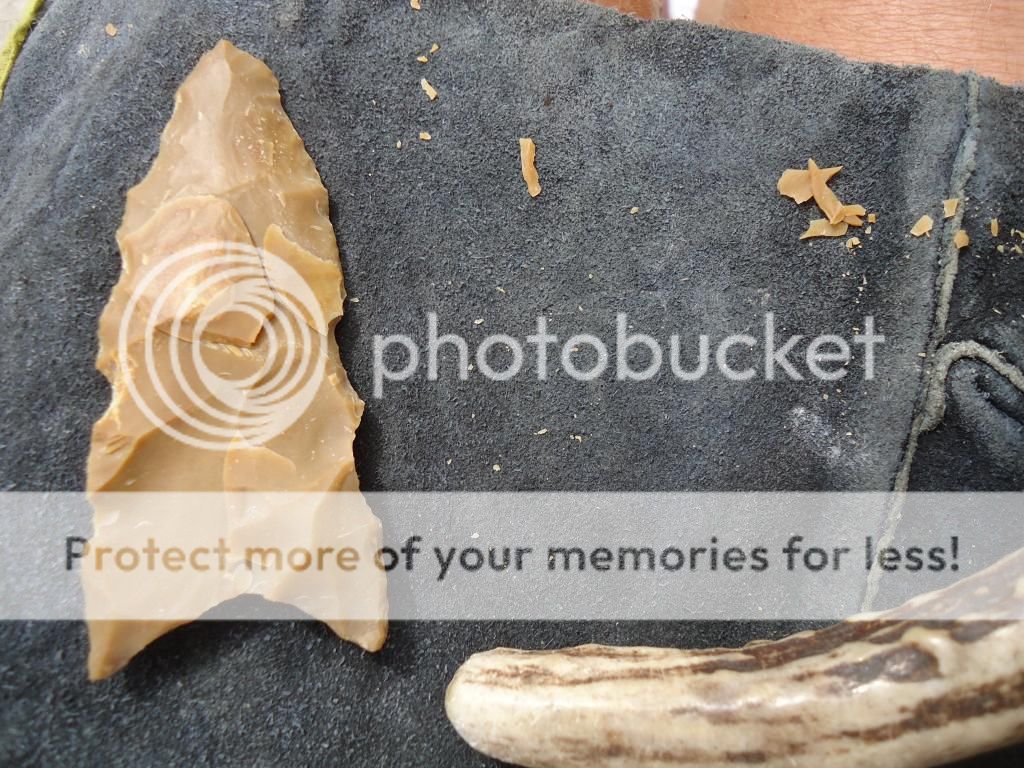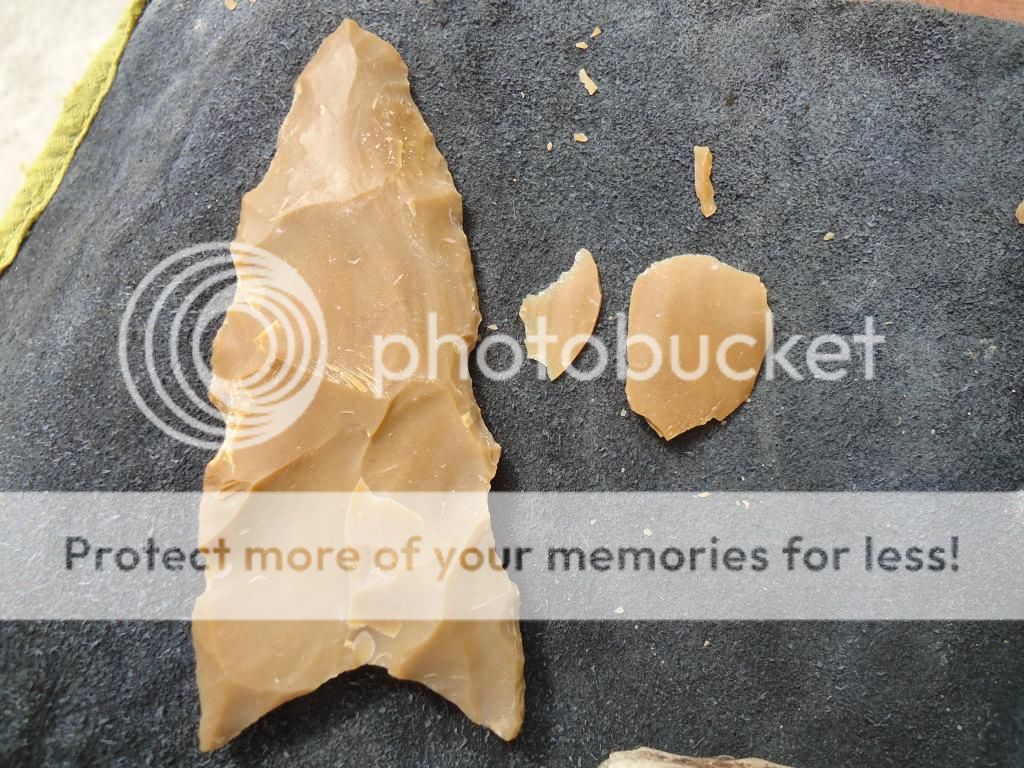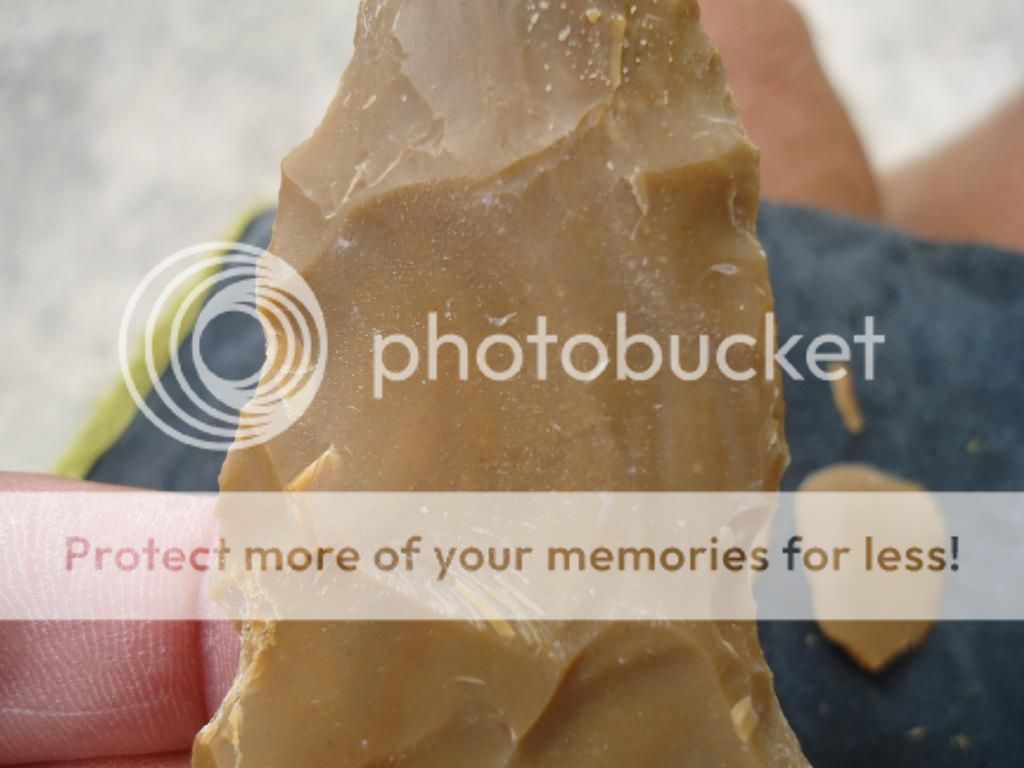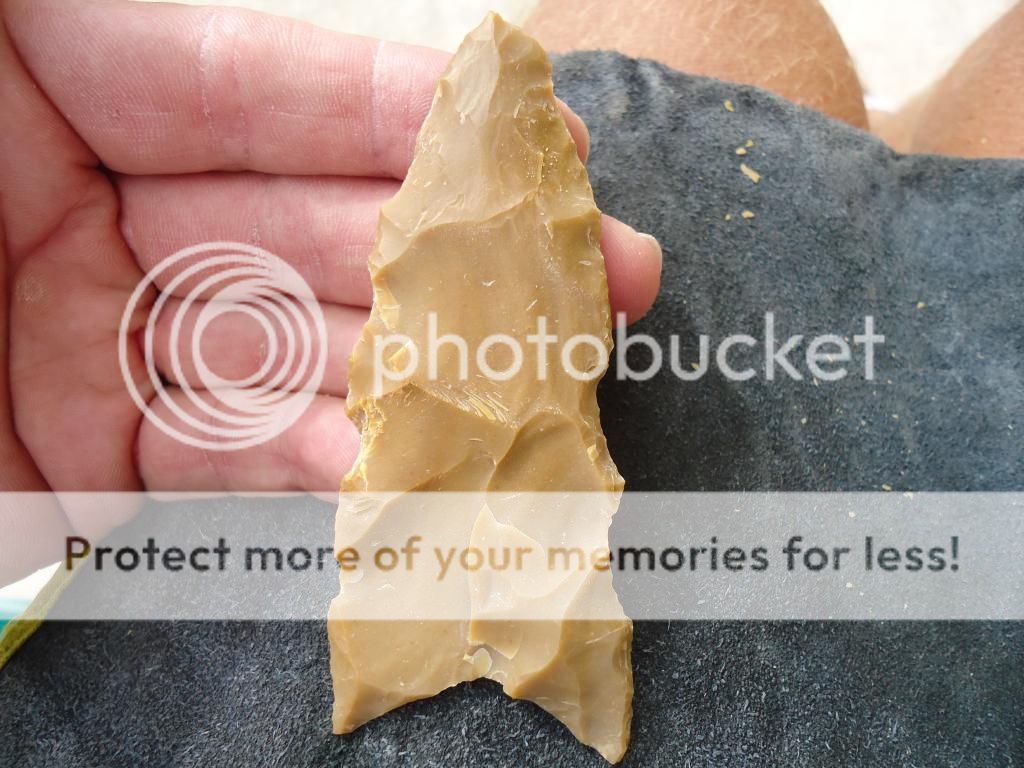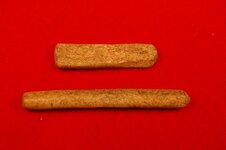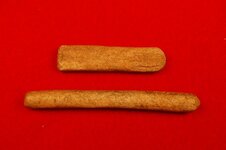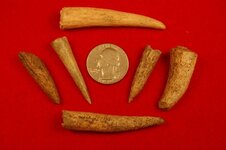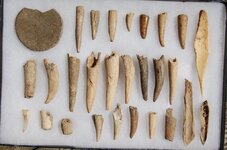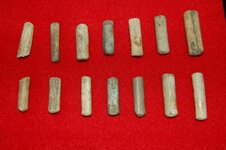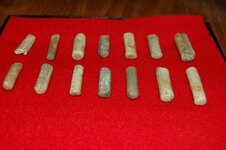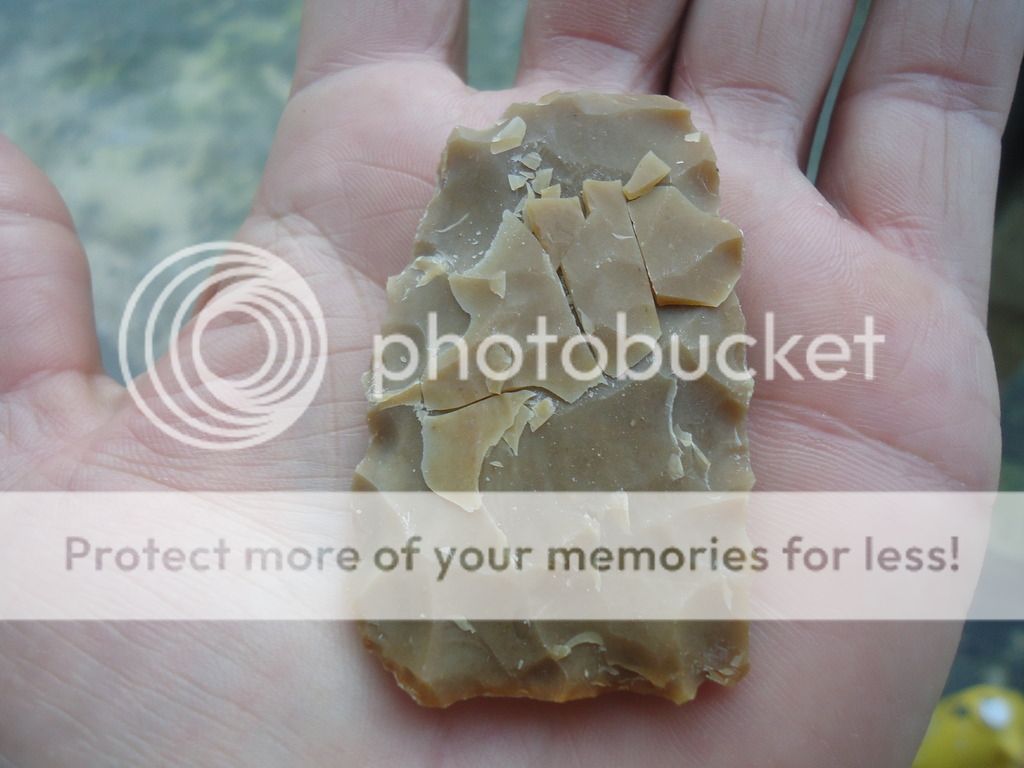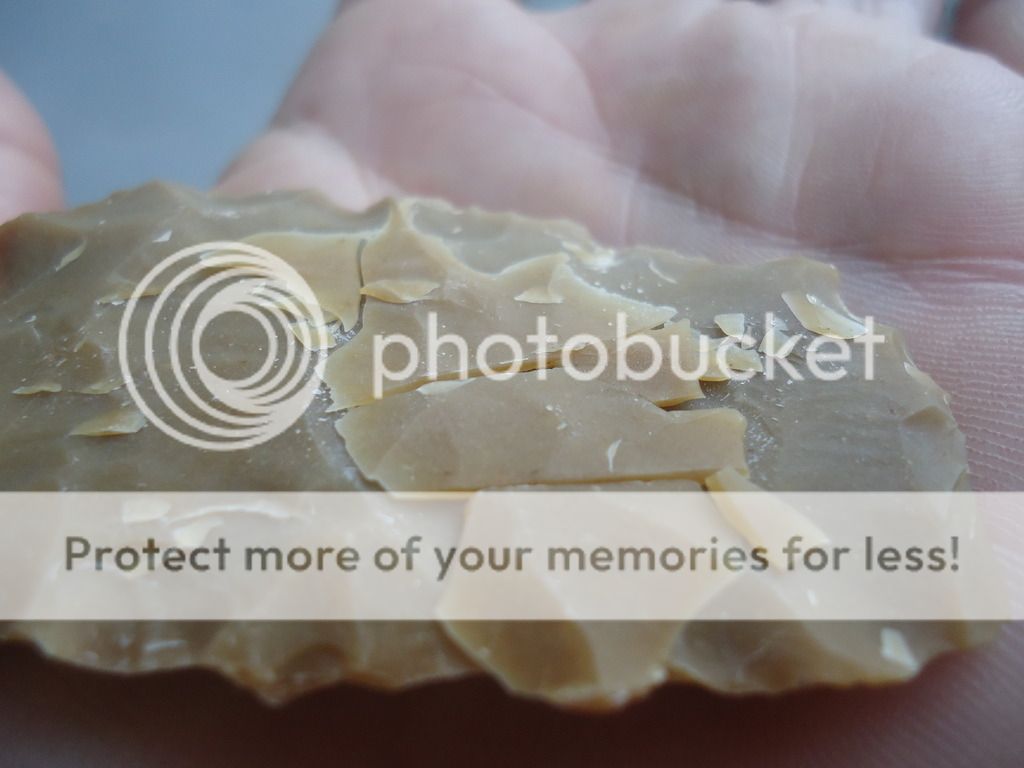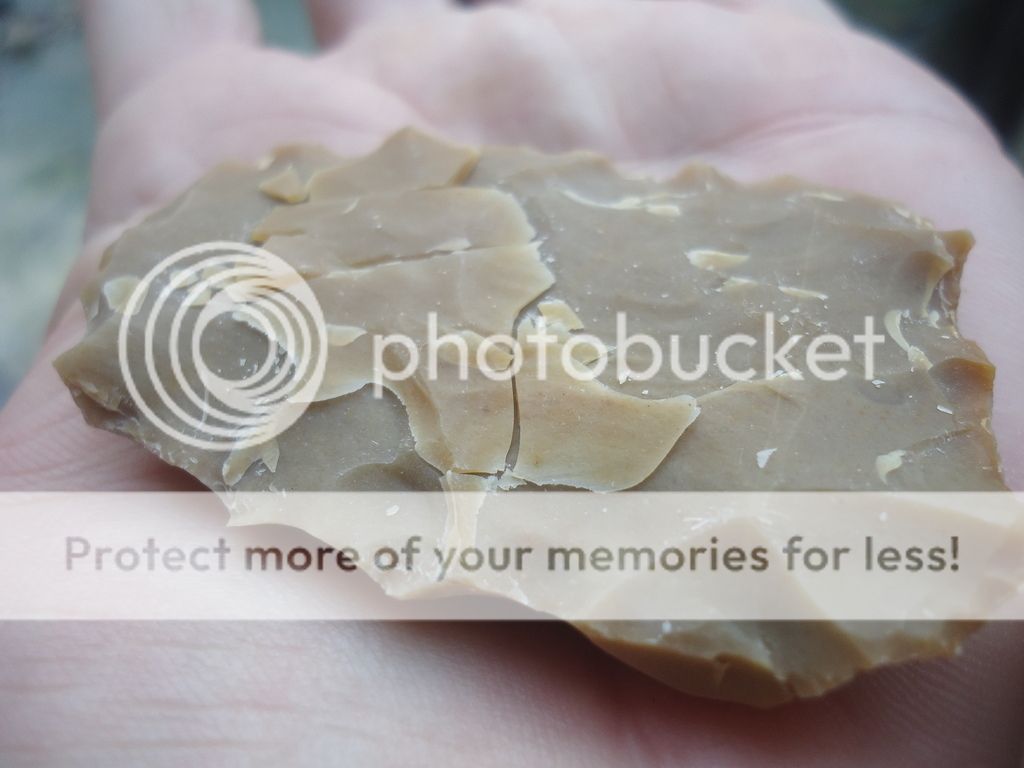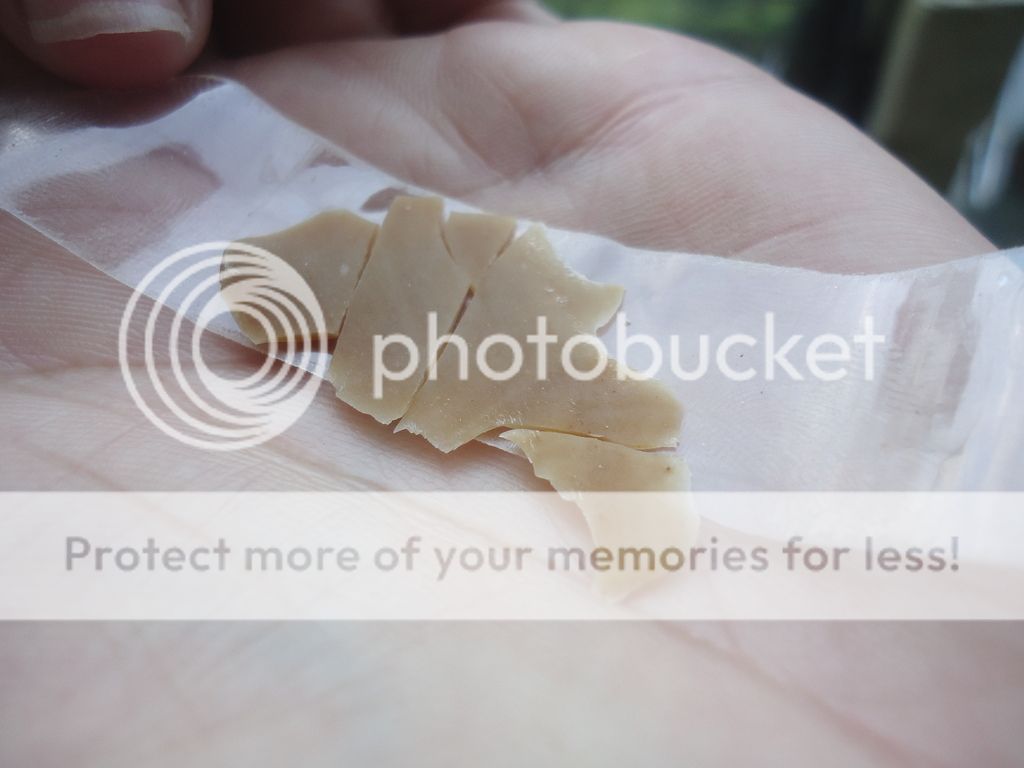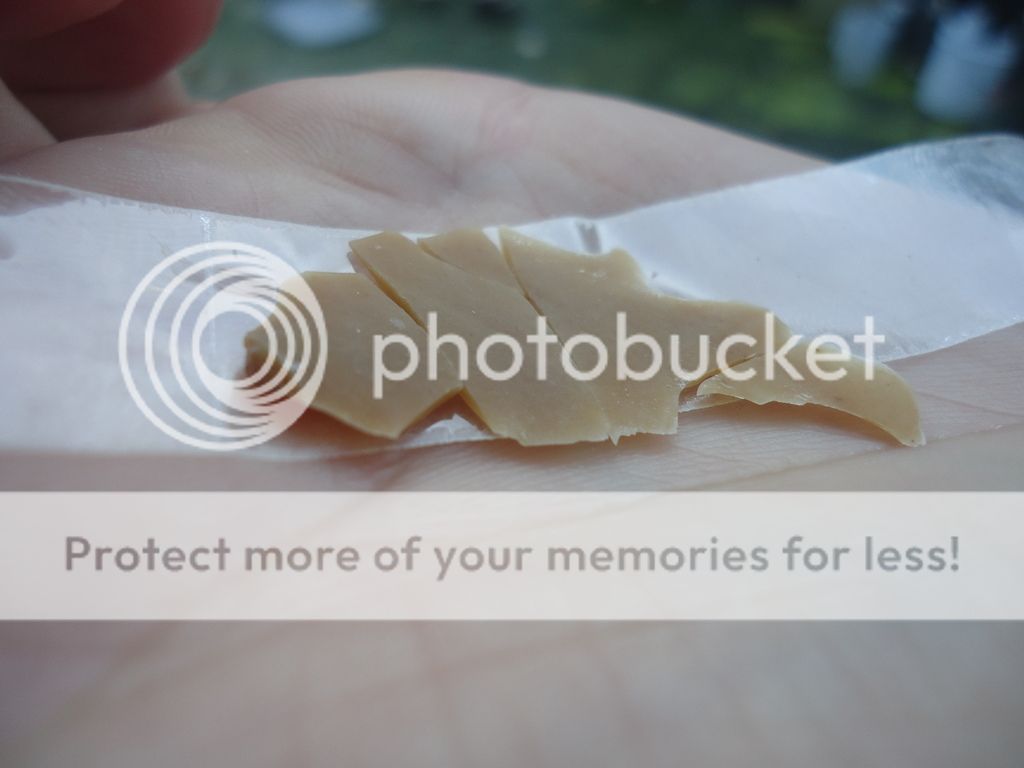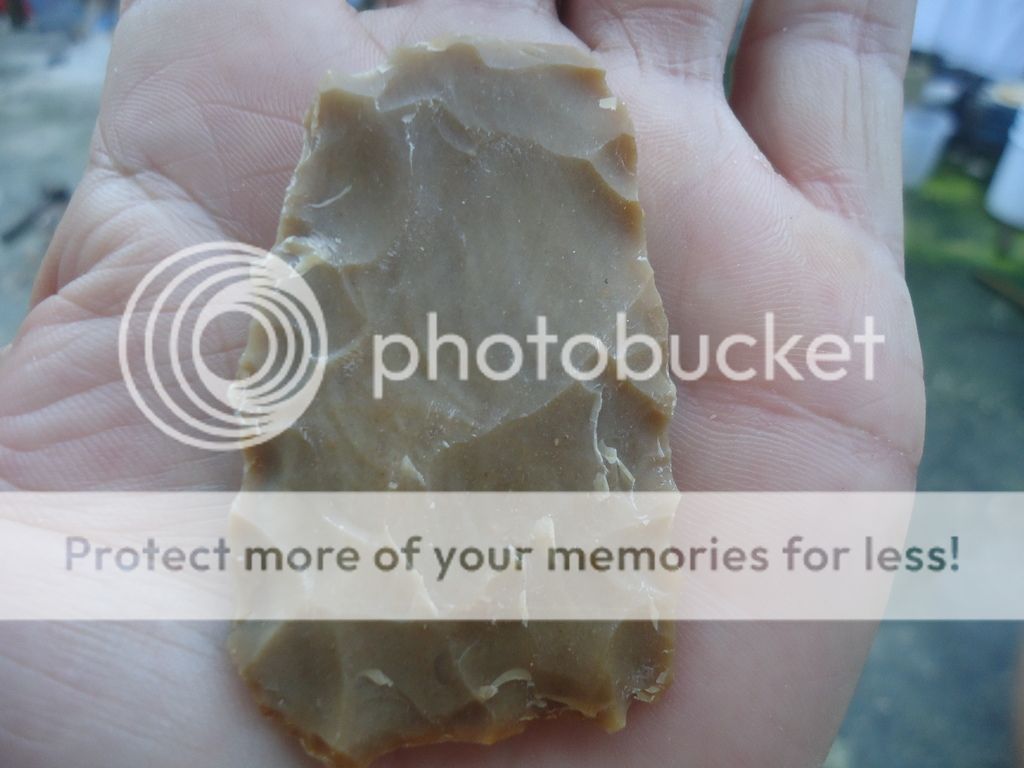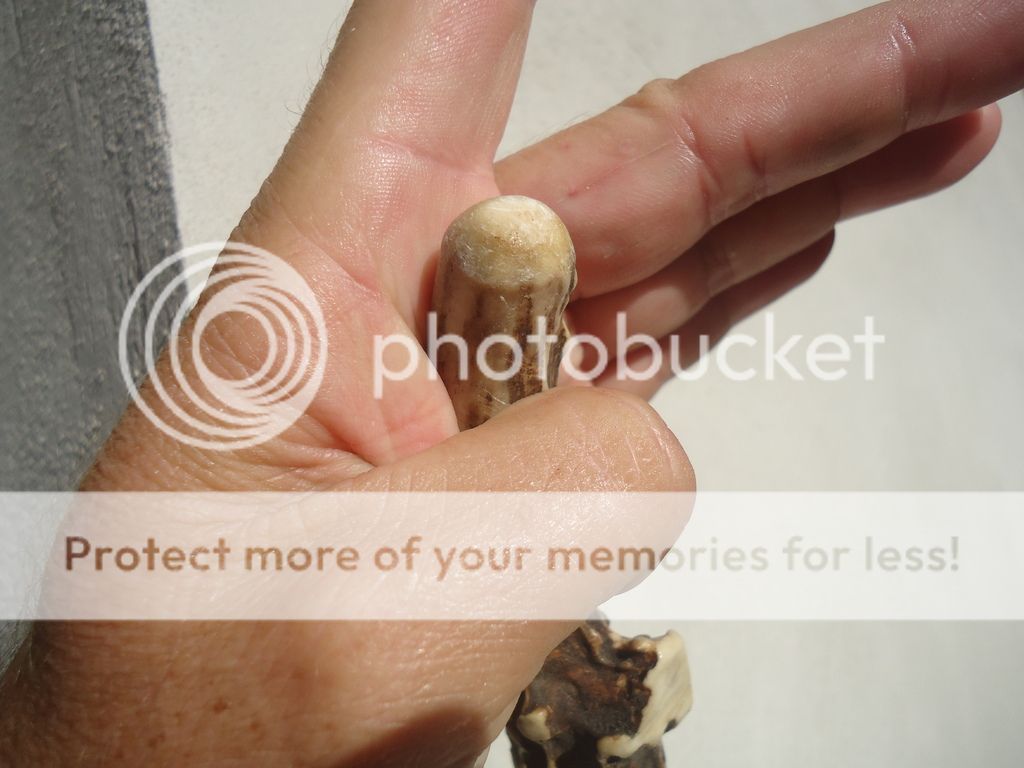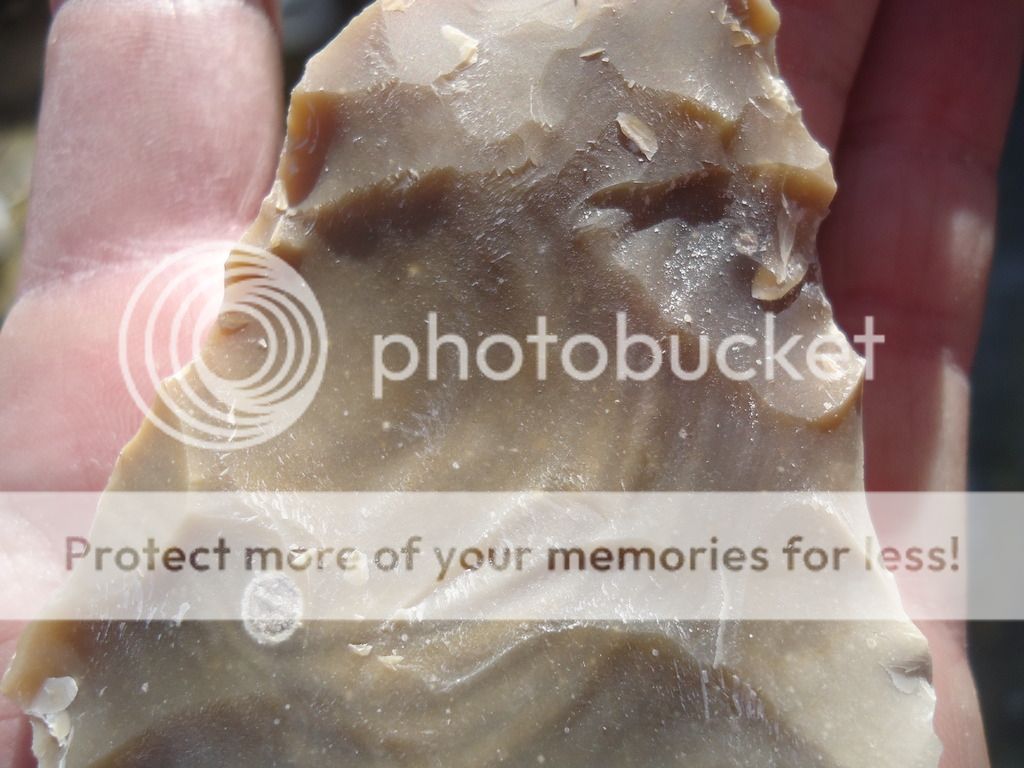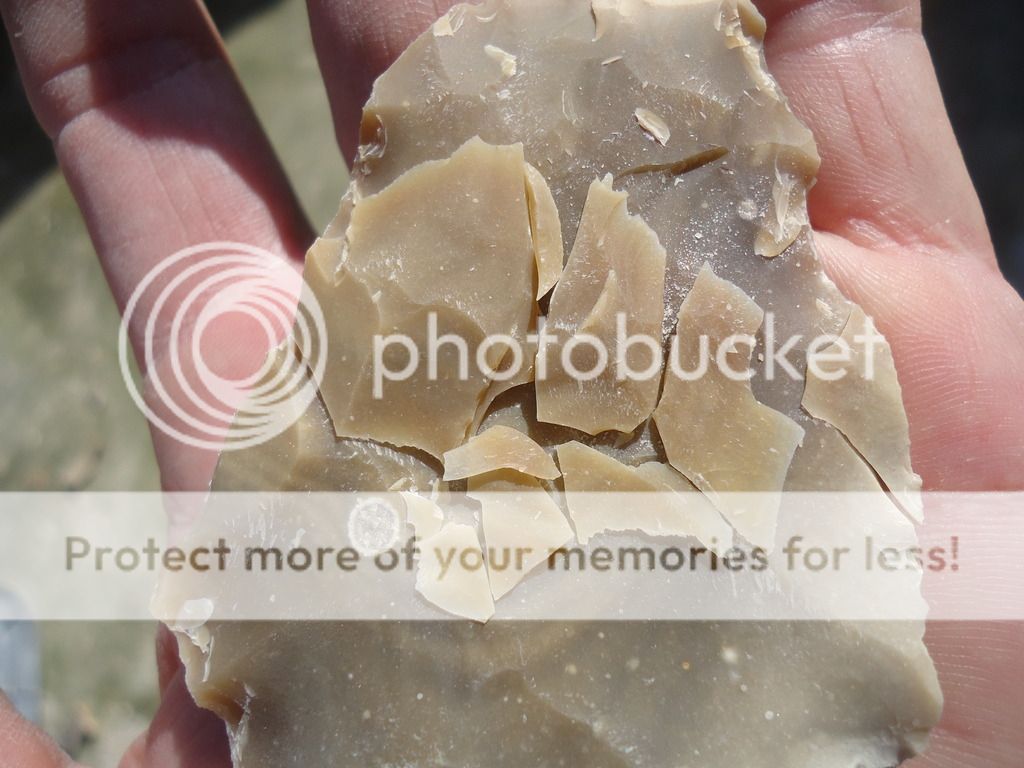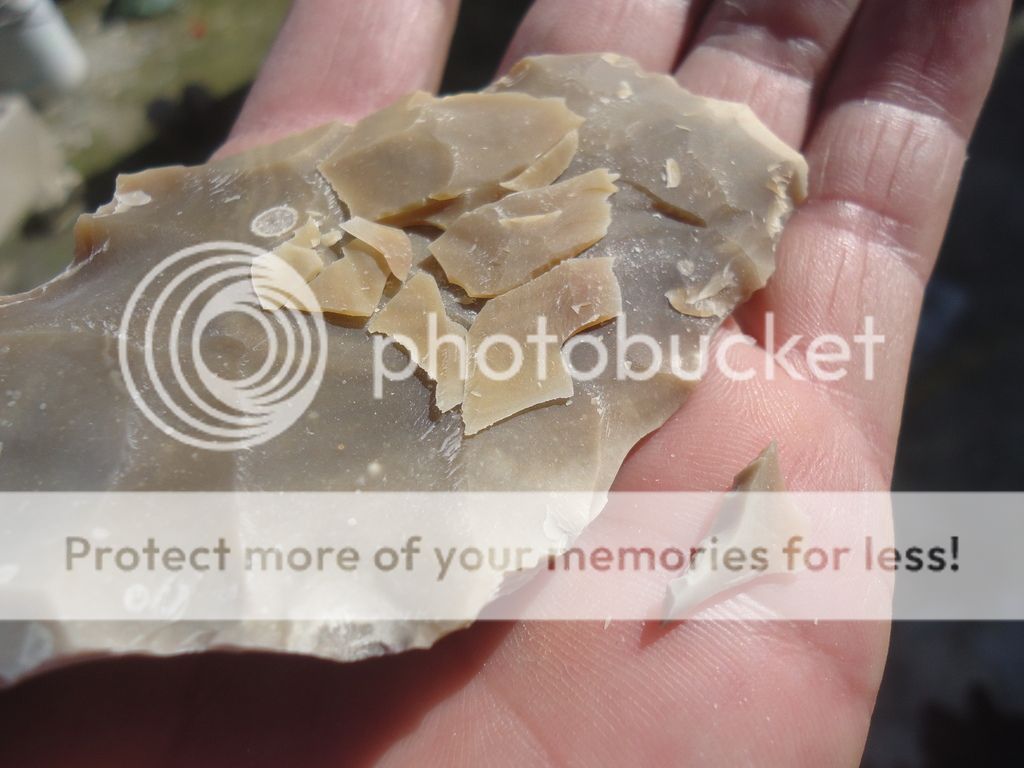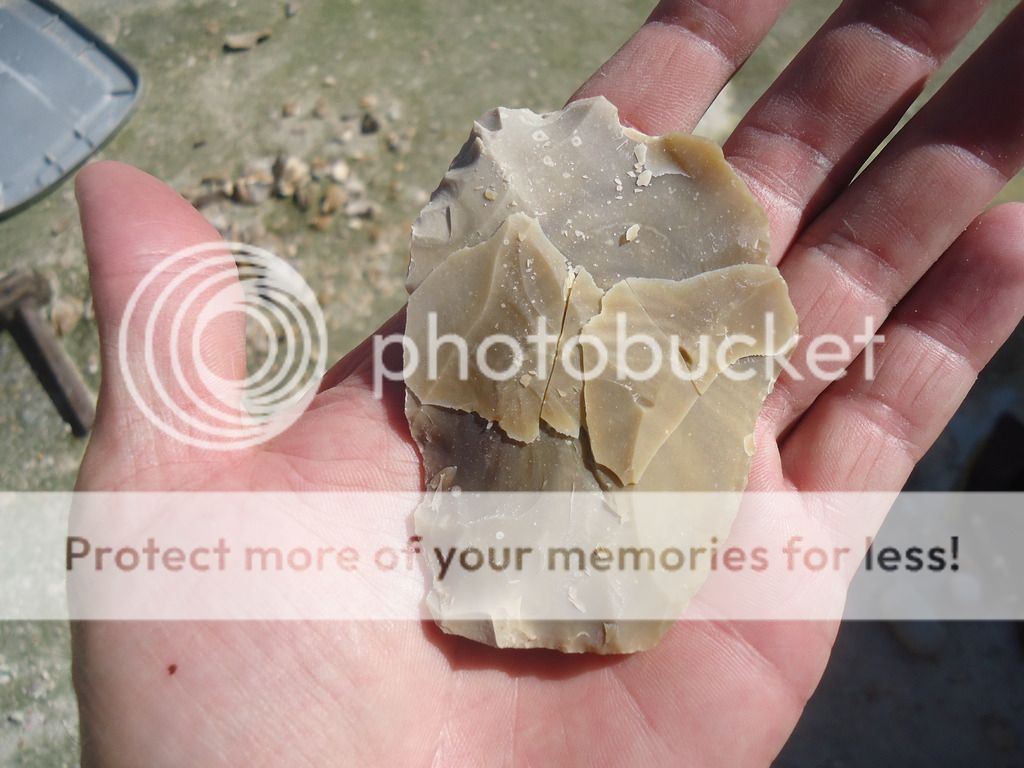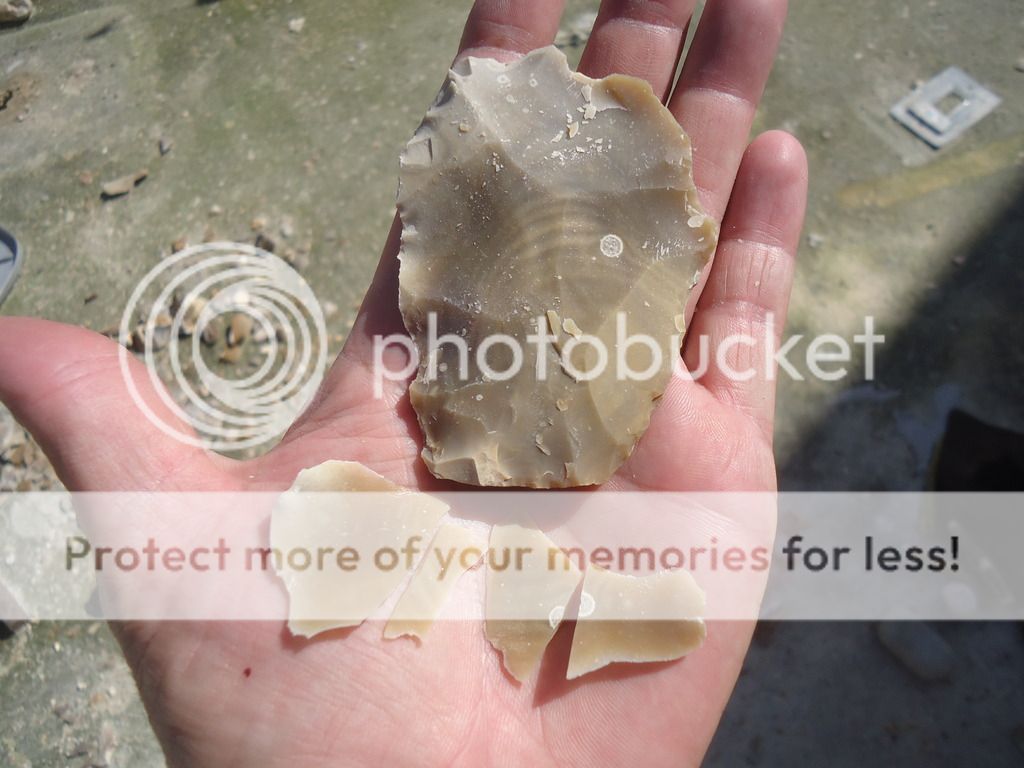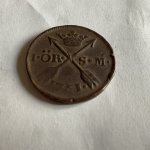Hello Fellow Enthusiasts,
I am looking for information on antler flakers. I am interested in any kinds of flakers, and all kinds of flakers.
I am also interested in any kinds of flakes that might be associated with the flakers. So, don't be afraid to post any potential flakers, and/or potential flakes.
The first kind of flaker that I am hoping to find more information on is what I consider to be a "blunt tine flaker". This is a flaker that has an end, with a blunted tine. If anyone knows of any artifacts that are so old that they are fossilized, that would be fine. Newer specimens would be fine, too.
Here is a modern example of one such a flaker, along with a closeup of the blunted tip, and examples of a flake made with the flaker. If you want to post any examples of similar flakes, and flakers, that would be fine. All info is welcome:
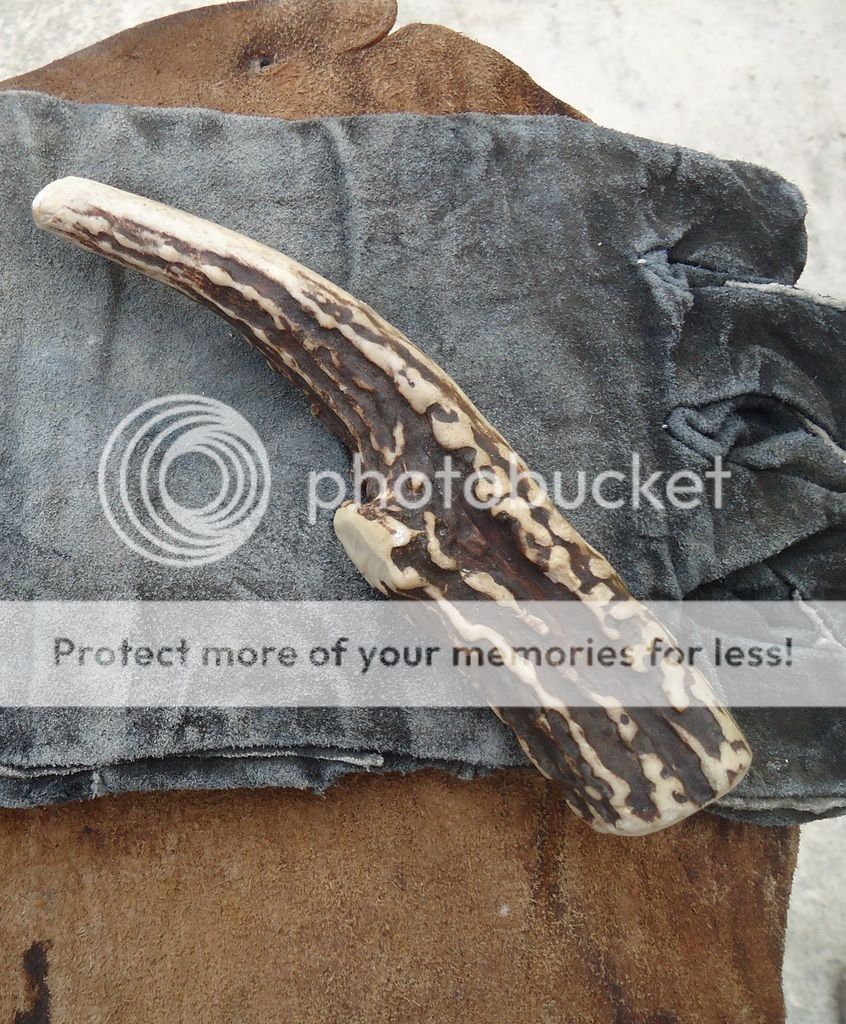
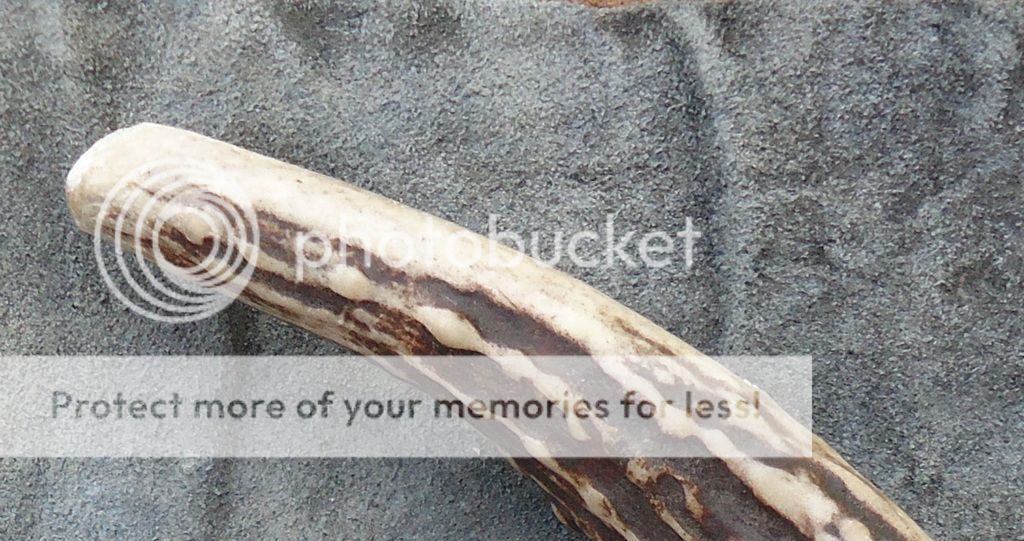
This type of flake travels across the face of the stone, and turns through the opposite edge. If you have found similar flakes, in the presence of any antler tools - especially blunted tines - please feel free to post:
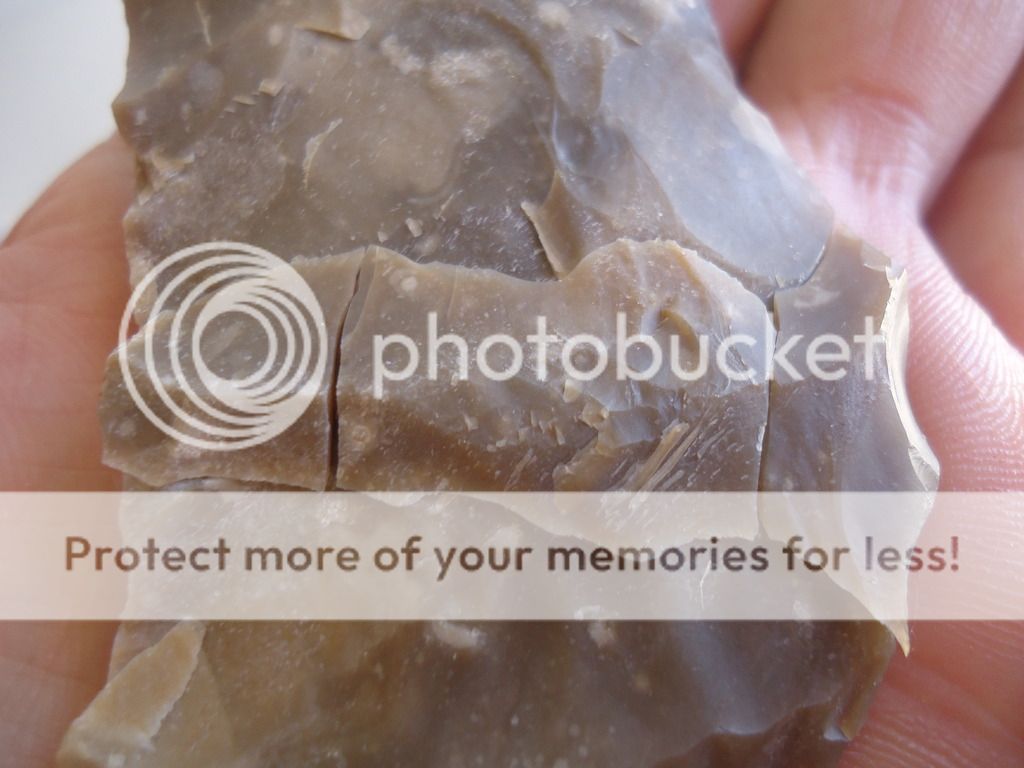
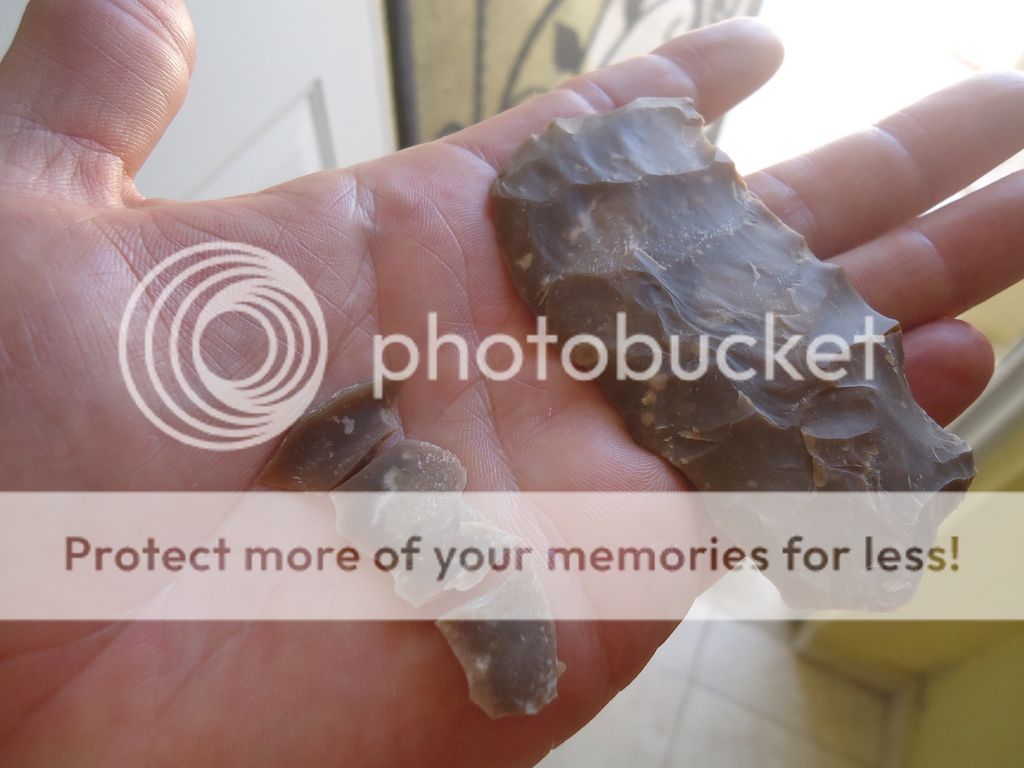
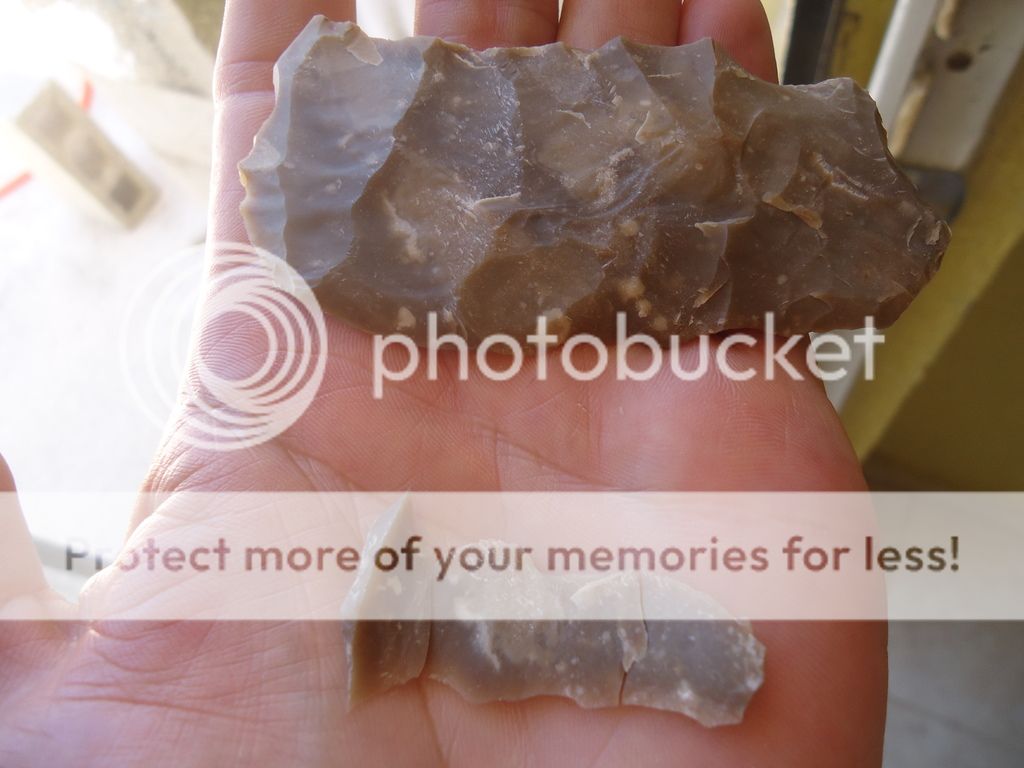
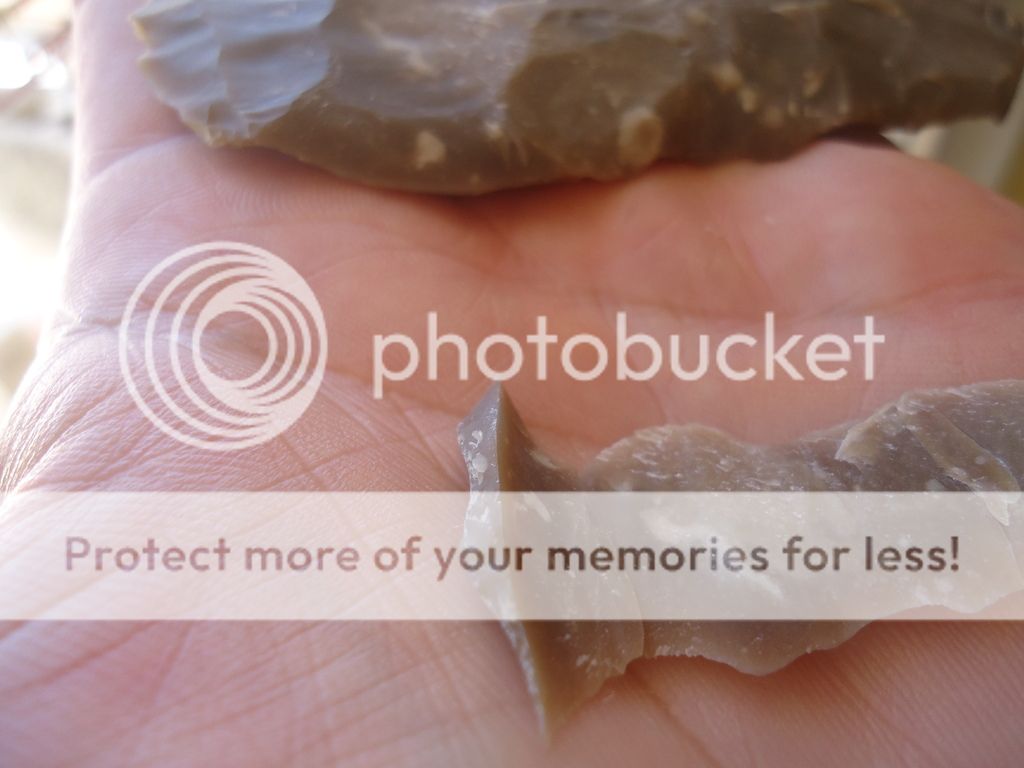
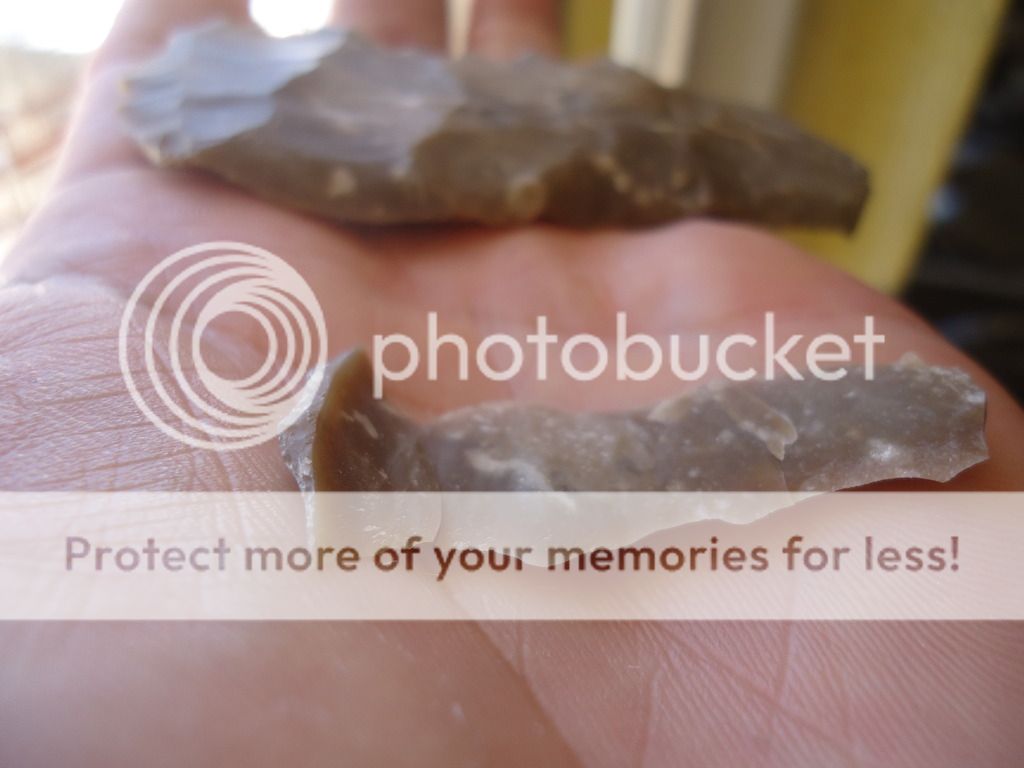
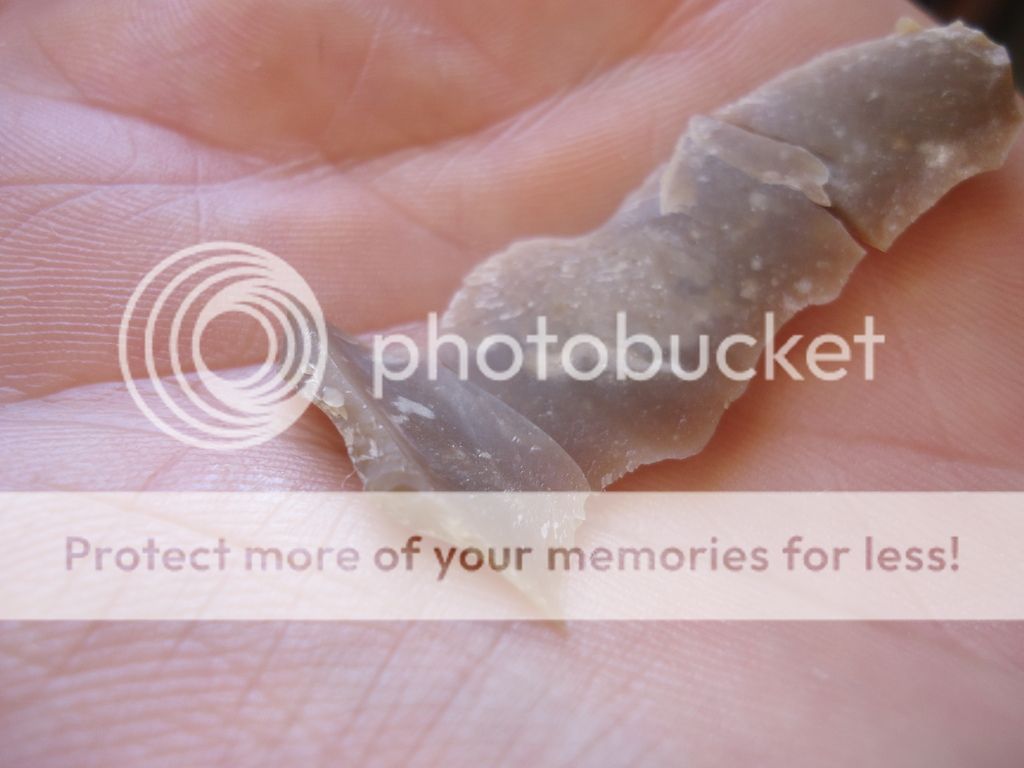
If anyone can share any examples of similar flakers, and flakes, an accompanying history of the find would be greatly appreciated.
Thanks,
Ben
I am looking for information on antler flakers. I am interested in any kinds of flakers, and all kinds of flakers.
I am also interested in any kinds of flakes that might be associated with the flakers. So, don't be afraid to post any potential flakers, and/or potential flakes.
The first kind of flaker that I am hoping to find more information on is what I consider to be a "blunt tine flaker". This is a flaker that has an end, with a blunted tine. If anyone knows of any artifacts that are so old that they are fossilized, that would be fine. Newer specimens would be fine, too.
Here is a modern example of one such a flaker, along with a closeup of the blunted tip, and examples of a flake made with the flaker. If you want to post any examples of similar flakes, and flakers, that would be fine. All info is welcome:


This type of flake travels across the face of the stone, and turns through the opposite edge. If you have found similar flakes, in the presence of any antler tools - especially blunted tines - please feel free to post:






If anyone can share any examples of similar flakers, and flakes, an accompanying history of the find would be greatly appreciated.
Thanks,
Ben
Amazon Forum Fav 👍
Last edited:
Upvote
0


